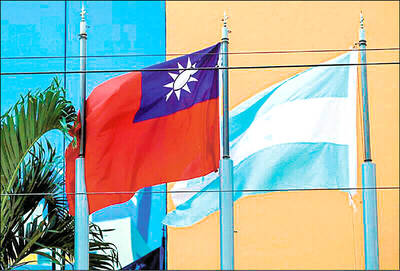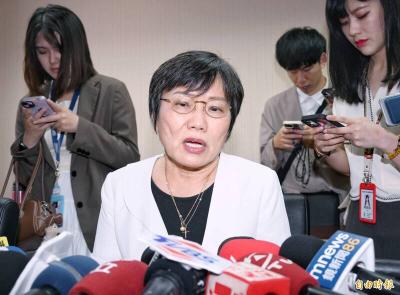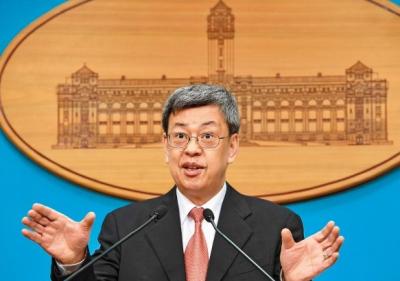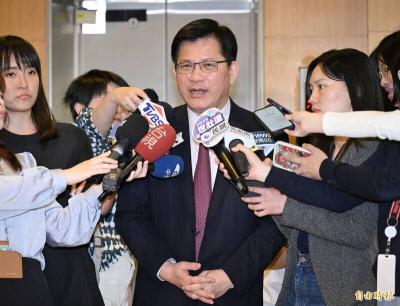The Civil Aeronautics Administration (CAA) has approved an application by Far Eastern Air Transport Corp to resume services after more than two years of suspension because of financial troubles, the CAA said yesterday.
CAA Director-General Yin Chen-pong (尹承蓬) confirmed the approval of the application, saying it was likely that the carrier would return to the market during the upcoming Lunar New Year holiday, which begins on Feb. 2.
The carrier has submitted a financial plan with the CAA in a bid to win approval to fly again. The CAA will be watching closely how the company carries out its financial plan after it restarts its business.
According to the CAA, while the application for business resumption has been approved, the agency will conduct further inspections on the carrier’s preparations for restarting services before allowing ticket sales.
The inspections, which are scheduled to start next week, will include screening ticket prices, examinations of inflight equipment and aircraft take-off and landing, and a review of the operations of the carrier’s check-in counters.
Two of the airline’s three MD83 planes have undergone a test flight program, but the two aircraft are not allowed to carry passengers.
Yin suggested Far Eastern Air seek approval first to provide charter flight services during the Lunar New Year holidays if the carrier needs more time to prepare for the resumption of regular flights.
The carrier said it would file an application to fly between Taipei and the Kinmen during the six-day holiday period, which is peak season for the air transportation sector.
Far Eastern Air’s flight operations were suspended in May 2008 amid financial difficulties and wage disputes.
The airline reportedly had debts of more than NT$10 billion (US$340.5 million) when it requested bankruptcy protection in February 2008 in the biggest crisis it had encountered since it was set up in 1957.

Taiwan would welcome the return of Honduras as a diplomatic ally if its next president decides to make such a move, Minister of Foreign Affairs Lin Chia-lung (林佳龍) said yesterday. “Of course, we would welcome Honduras if they want to restore diplomatic ties with Taiwan after their elections,” Lin said at a meeting of the legislature’s Foreign Affairs and National Defense Committee, when asked to comment on statements made by two of the three Honduran presidential candidates during the presidential campaign in the Central American country. Taiwan is paying close attention to the region as a whole in the wake of a

Chinese Nationalist Party (KMT) Chairman Eric Chu (朱立倫), spokeswoman Yang Chih-yu (楊智伃) and Legislator Hsieh Lung-chieh (謝龍介) would be summoned by police for questioning for leading an illegal assembly on Thursday evening last week, Minister of the Interior Liu Shyh-fang (劉世芳) said today. The three KMT officials led an assembly outside the Taipei City Prosecutors’ Office, a restricted area where public assembly is not allowed, protesting the questioning of several KMT staff and searches of KMT headquarters and offices in a recall petition forgery case. Chu, Yang and Hsieh are all suspected of contravening the Assembly and Parade Act (集會遊行法) by holding

President William Lai (賴清德) has appointed former vice president Chen Chien-jen (陳建仁) to attend the late Pope Francis’ funeral at the Vatican City on Saturday on his behalf, the Ministry of Foreign Affairs said today. The Holy See announced Francis’ funeral would take place on Saturday at 10am in St Peter’s Square. The ministry expressed condolences over Francis’ passing and said that Chen would represent Taiwan at the funeral and offer condolences in person. Taiwan and the Vatican have a long-standing and close diplomatic relationship, the ministry said. Both sides agreed to have Chen represent Taiwan at the funeral, given his Catholic identity and

Taiwan would welcome the return of Honduras as a diplomatic ally if the next president of that country decides to make such a move, Minister of Foreign Affairs Lin Chia-lung (林佳龍) said today. “We would welcome Honduras if they want to restore diplomatic ties with Taiwan after their elections,” Lin said during a legislative hearing. At the same time, Taiwan is paying close attention to the Central American region as a whole, in the wake of a visit there earlier this year by US Secretary of State Marco Rubio, Lin said. Rubio visited Panama, El Salvador, Costa Rica and Guatemala, during which he